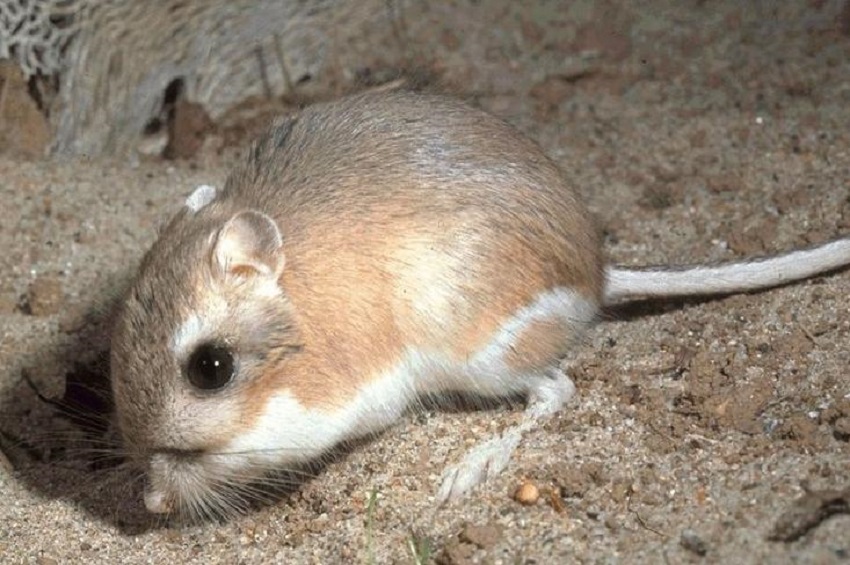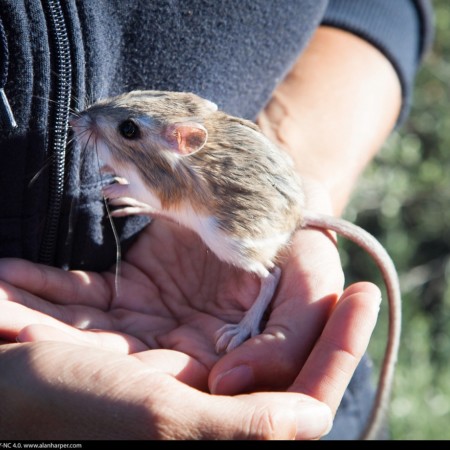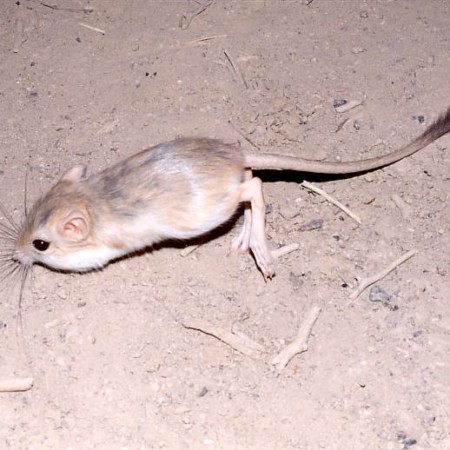(Photograph = Kangaroo rat [Dipodomys sp], Scott Costello)
Introduction
Kangaroo rats (Dipodomys) live in arid and semi-arid regions in sandy or soft soils where they can burrow. Kangaroo rats are bipedal, they hop on their rear legs and can leap up to 6 ft (or even more). There are nearly 2 dozen species of kangaroo rats in Mexico, the United States, and Canada.
The Details
Dipodomys deserti is the desert kangaroo rat. It is found in the western Great Basin, parts of the Sonoran Desert, and the Mojave Desert including Death Valley. Kangaroo rats live in burrows or burrow systems that include storerooms and a central den. They are typically nocturnal. They can occur in small colonies of half-a-dozen or more burrows and individuals. They are typically found in areas with lots of sandy soil and sparse vegetation. Generally, kangaroo rats are not found at elevations higher than 4,000 ft.
The desert kangaroo rat eats essentially only seeds, especially those rich in carbohydrates. Some underground storerooms contain large amounts of mesquite pods. Unlike other Dipodomys species with more cosmopolitan diets, desert kangaroo rats do not consume green vegetation.
Kangaroo rats are known for their ability to survive on limited water, and desert kangaroo rats appear to take this ability to extreme. Kangaroo rats have evolved mechanisms to concentrate their urine and excrete very small amounts of water. Also, the majority of their water is produced by metabolic processes and kangaroo rats need consume only small amounts of environmental water. Even the nasal cavity of kangaroo rats is evolved to help conserve water.
Multiple predators consume desert kangaroo rats including birds, reptiles, and coyotes.
Additional Reading: Kangaroo Rats
Additional Reading: Desert Kangaroo Rat







